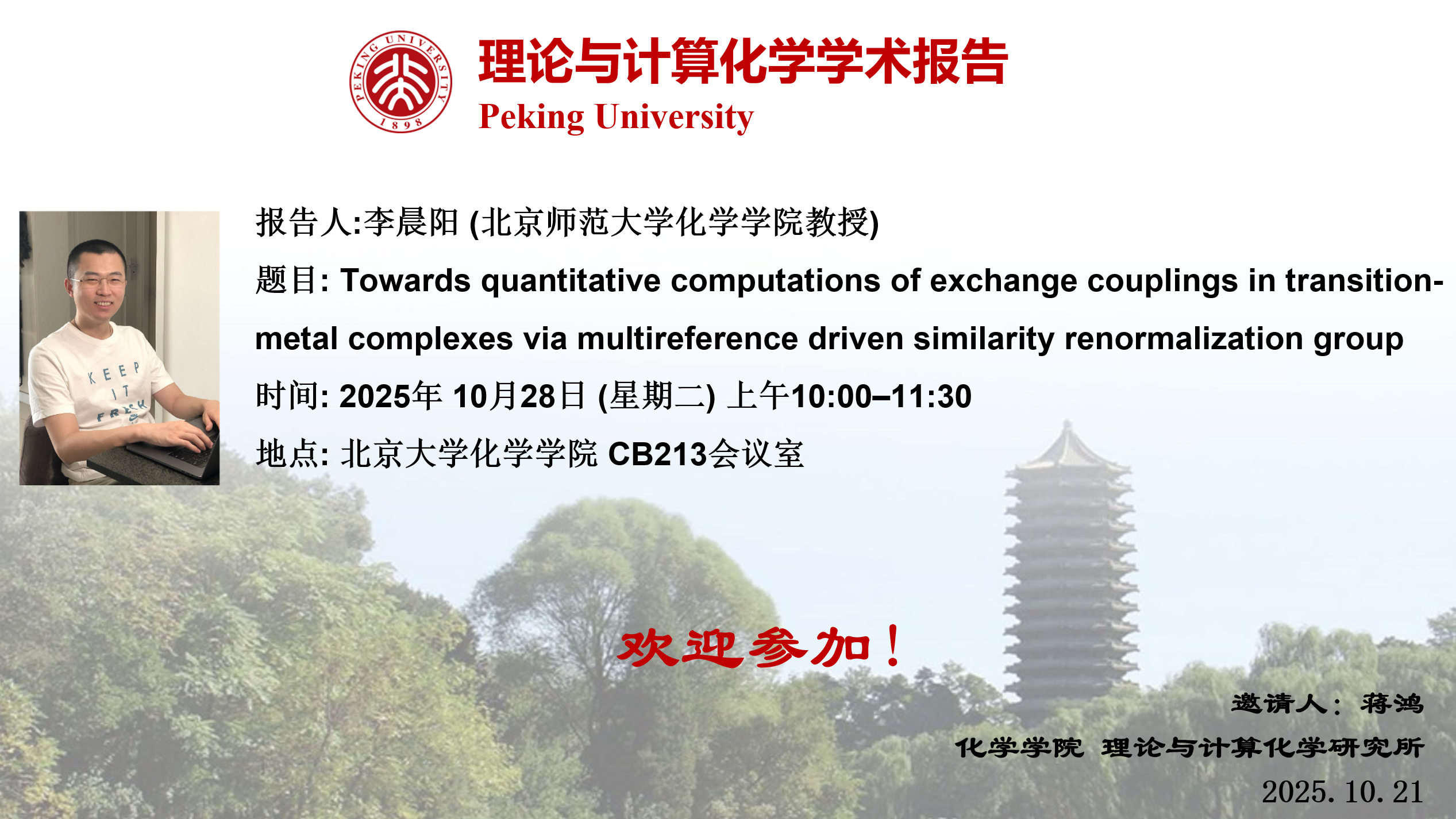
报告摘要
The driven similarity renormalization group (DSRG) provides an alternative way to formulate numerically robust multireference electron correlation methods [1]. Over the past decade, we have developed a series of multireference theories based on the driven similarity renormalization group, including second- and third-order perturbation theories and their nonperturbative extensions. These methods are all strictly size-consistent, free from the intruder-state problem, and they require at most three-particle reduced density matrix from the reference state. In this talk, I will start by overviewing the multireference DSRG formalism and discuss its recent developments on treating larger molecules [2,3]. Finally, I will show that the DSRG second-order perturbation theory yields accurate exchange coupling constants for bimetallic molecules when a proper active space is selected.
References:
[1] C. Li and F. A. Evangelista, “Multireference Theories of Electron Correlation Based on the Driven Similarity Renormalization Group”, Ann. Rev. Phys. Chem., 2019, 70, 245.
[2] C. Li, S. Mao, R. Huang, and F. A. Evangelista, “Frozen Natural Orbitals for the State-Averaged Driven Similarity Renormalization Group”, J. Chem. Theory. Comput., 2024, 20, 4170.
[3] C. Li, X. Wang, H. Zhai, and W.-H. Fang, “Driven Similarity Renormalization Group with a Large Active Space: Applications to Oligoacenes, Zeaxanthin, and Chromium Dimer”, J. Chem. Theory. Comput., 2025, 21, 5445.
报告人简介
李晨阳,北京师范大学化学学院教授,博士生导师。2012年本科毕业于南京大学化学与化工学院,2015年在美国佐治亚大学获理学博士学位。此后在美国埃默里大学进行博士后研究,2021年加入北京师范大学化学学院。研究方向为电子结构理论方法的开发与应用,特别是发展精确高效的激发态电子结构方法及其解析梯度理论。曾获国家自然科学基金委优秀青年科学基金(海外)资助。